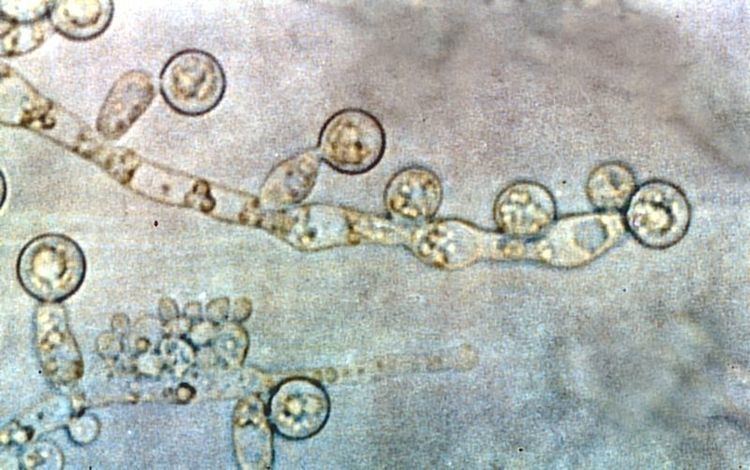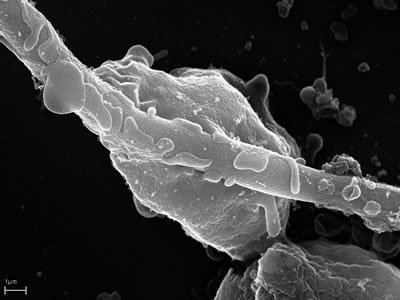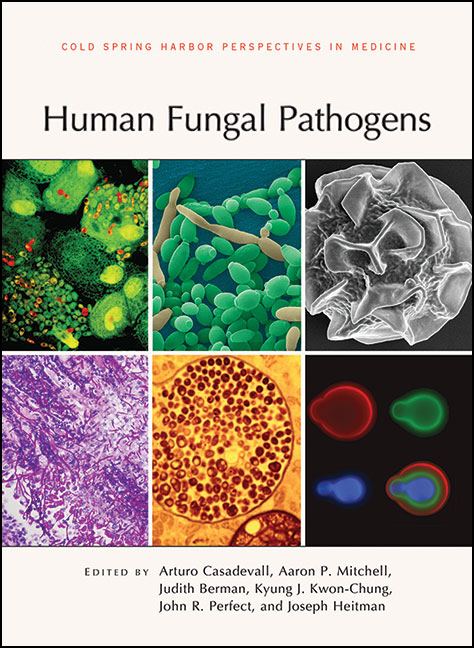 | ||
Representative species Aspergillus flavus, Candida glabrata, Candida parapsilosis, Candida tropicalis, Issatchenkia orientalis | ||
Pathogenic fungi are fungi that cause disease in humans or other organisms. The study of pathogenic fungi is referred to as "medical mycology." Although fungi are eukaryotic organisms, many pathogenic fungi are also microorganisms. Fungicides, such as ziram are used to protect plants against fungal infections.
Contents

Candida

Candida species cause infections in individuals with deficient immune systems. Th1-type cell-mediated immunity (CMI) is required for clearance of a fungal infection.
Aspergillus

The most common pathogenic species are Aspergillus fumigatus and Aspergillus flavus. Aspergillus flavus produces aflatoxin which is both a toxin and a carcinogen and which can potentially contaminate foods such as nuts. Aspergillus fumigatus and Aspergillus clavatus can cause allergic disease. Some Aspergillus species cause disease on grain crops, especially maize, and synthesize mycotoxins including aflatoxin. Aspergillosis is the group of diseases caused by Aspergillus. The symptoms include fever, cough, chest pain or breathlessness. Usually, only patients with weakened immune systems or with other lung conditions are susceptible.
Cryptococcus

Cryptococcus neoformans can cause a severe form of meningitis and meningo-encephalitis in patients with HIV infection and AIDS. The majority of Cryptococcus species live in the soil and do not cause disease in humans. Cryptococcus neoformans is the major human and animal pathogen. Cryptococcus laurentii and Cryptococcus albidus have been known to occasionally cause moderate-to-severe disease in human patients with compromised immunity. Cryptococcus gattii is endemic to tropical parts of the continent of Africa and Australia and can cause disease in non-immunocompromised people.
Histoplasma

Histoplasma capsulatum can cause histoplasmosis in humans, dogs and cats. The fungus is most prevalent in the Americas, India and southeastern Asia. It is endemic in certain areas of the United States. Infection is usually due to inhaling contaminated air.
Pneumocystis

Pneumocystis jirovecii (or Pneumocystis carinii) can cause a form of pneumonia in people with weakened immune systems, such as premature children, the elderly and AIDS patients.
Stachybotrys
Stachybotrys chartarum or "black mold" can cause respiratory damage and severe headaches. It frequently occurs in houses in regions that are chronically damp.
Endothermy
Mammalian endothermy and homeothermy are potent nonspecific defenses against most fungi.
